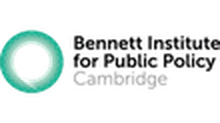The social restrictions and disrupted educational experiences resulting from Covid-19 have had a negative impact on many young people’s mental health. The damage to wellbeing has been more persistent in certain groups, particularly among girls and those who identify as non-binary.
Young people’s mental health and wellbeing have attracted increasing concern over the past decade or more. There is evidence of long-term increases in the prevalence of mental distress among young adults that were already a cause for alarm before Covid-19. As such, the potential impact of the pandemic has provided an additional layer to an already worrying situation.
Concern was expressed from early in the pandemic that any negative effects it had on wellbeing would persist beyond the end of restrictions. Emerging evidence from the general population suggests that this forecast may be turning out to have been accurate.
Indeed, there is evidence that the pandemic did have a negative impact on young people’s wellbeing and mental health, but some research indicates an initial recovery in the latter phases of the pandemic.
While short-term impacts are, of course, important in their own right, we should be especially concerned if the effects of the pandemic are continuing to affect young people’s lives – including their subjective wellbeing – now that social restrictions have subsided and life is back to ‘normal’.
So what do we know about post-pandemic inequalities in young people’s wellbeing and the potential issues linked to lingering impacts of the pandemic?
In new work, drawing on data from the COVID Social Mobility and Opportunities study, we provide evidence on young people’s wellbeing in the aftermath of the pandemic and some of the factors associated with these levels using a large, representative sample of young people from across England. Understanding inequalities and potential lingering effects are important pre-requisites for targeting support effectively to begin to address these challenges.
There is longstanding evidence of gender differences in wellbeing, which others’ research finds to have been exacerbated by the pandemic. There is little evidence of this having closed since the pandemic among young people (although others have found it to have narrowed among the general population).
Our work finds that girls and those who identify as non-binary or in another way report lower wellbeing scores (around 0.5 for girls and around 1.5 for non-binary+ young people on a scale from one to ten) than boys, even after adjusting for other demographic characteristics, self-reported levels of social support and experience of adverse life events.
These are substantial differences that are relevant to the higher rates of mental health challenges for individuals in these groups. In particular, the large differences associated with identifying as non-binary or in another way suggest a need for support targeted towards these groups.
Figure 1: Differences in wellbeing by gender
Source: COVID Social Mobility and Opportunities study
Notes: All models report differences at Wave 2 adjusting for wellbeing at Wave 1, so focusing on changes in wellbeing over the course of around a year. Model L1 does not adjust for young people’s other characteristics; L4 adjusts for socio-economic status and ethnicity; L6 also adjusts for social support; L8 also adjusts for experiences of adverse life events.
Although other work has documented a recovery in wellbeing for many since the pandemic, we think it is important to highlight young people’s own perceptions of the continuing impact of the pandemic on their wellbeing.
A third of young people were continuing to report such effects in late 2022 and early 2023, with the vast majority of them reporting these to be negative impacts. Our findings illustrate the importance of taking such reports seriously: those who indicate that the pandemic is still having a negative impact on their lives have substantially lower subjective wellbeing scores – more than one point on a one to ten scale – with similar differences across demographic groups.
An important part of why the pandemic may be having a continuing negative effect on young people’s wellbeing is the increased probability of experiencing a range of adverse life events that are known to affect wellbeing. Tracking young people’s experiences of such events – across domains relating to health, financial distress and relationship distress – throughout the pandemic period shows that 29% of pupils reported experiencing no such events at all, while 26% experienced three or more.
Figure 2: Differences in wellbeing by perceived continued negative impact of the pandemic, with and without controlling for adverse life events
Source: COVID Social Mobility and Opportunities study
Notes: Model P3 adjusts for demographic characteristics, socio-economic status and social support; E4 also adjusts for experience of adverse life events during the pandemic.
Experiencing more of these adverse life events during the pandemic predicts lower subjective wellbeing subsequently, even among those with similar demographic and socio-economic characteristics. Nevertheless, differences in experiences of adverse events explain only a small part of the lower scores that we see among those who perceive a continued impact of the pandemic on their mental wellbeing.
Contrary to our expectations, and in contrast with others’ findings, while social support predicts higher wellbeing scores, we do not find evidence that it mediates or buffers the impact of adverse life events among young people.
Our findings indicate that challenges posed by inequalities in young people’s wellbeing continue. This highlights the importance of long-term targeted support to overcome them.
The practicalities of providing such support at scale are now much harder for our specific cohort, as many of them have left education entirely. But many of the issues discussed will apply similarly to those young people still working their way through the education system, who could be reached through schools and colleges.
We should not ignore this issue. Above and beyond the negative implications for young people’s life experiences, there are potential implications for national economic performance, including via increased risks of mental health challenges for the young people still being affected.
Where can I find out more?
- Young people’s subjective wellbeing in the wake of the COVID-19 pandemic: evidence from a representative cohort study in England: a study by Jake Anders and Erica Holt-White at the University College London (UCL) Centre for Education Policy and Equalising Opportunities (CEPEO) and the Sutton Trust.
- Inequalities in late adolescents’ educational experiences and wellbeing during the Covid-19 pandemic: a study in the Oxford Review of Education.
- Wave 1 Initial Findings: Mental Health and Wellbeing: COVID Social Mobility and Opportunities (COSMO) study, CEPEO and the Sutton Trust.
- Wave 2 Initial Findings: Mental and Physical Health: COSMO study briefing, CEPEO and the Sutton Trust.
Who are the experts on this question?
- Jake Anders, UCL Centre for Education Policy and Equalising Opportunities
- Golo Henseke, UCL
- Praveetha Patalay, UCL
- Eugenio Proto, University of Glasgow
- Climent Quintana-Domeque, University of Exeter









































